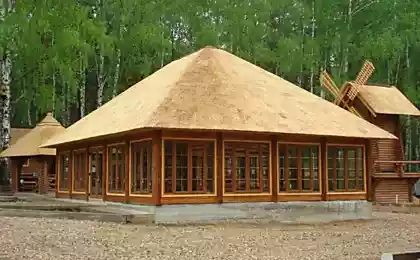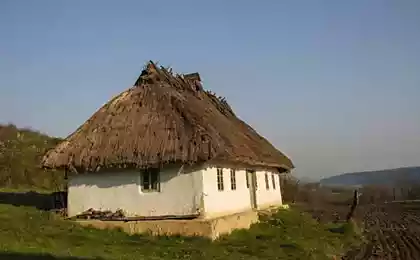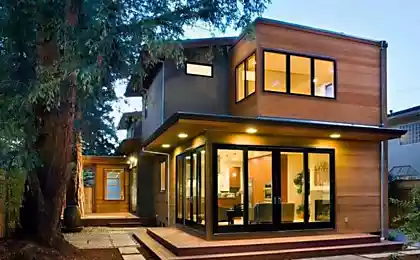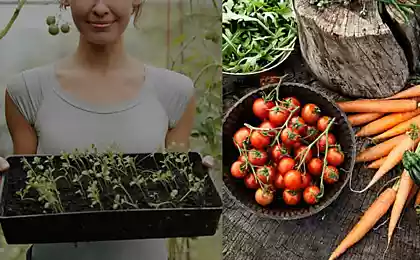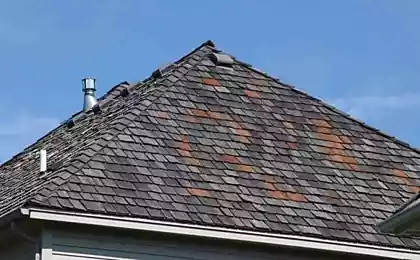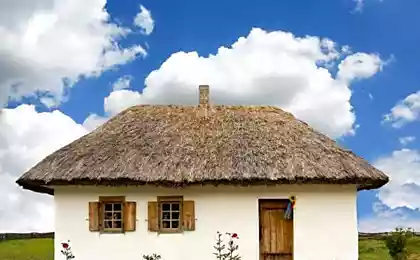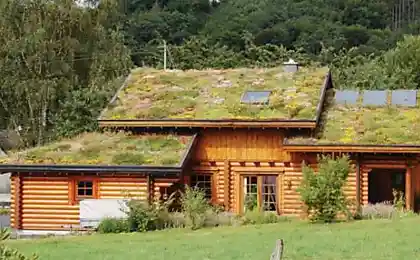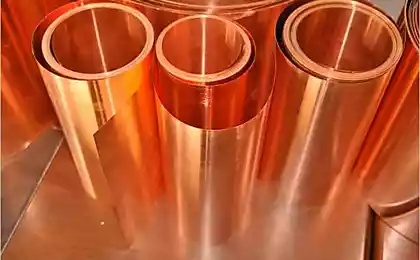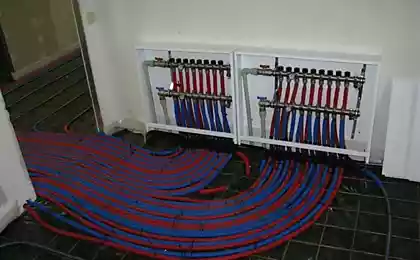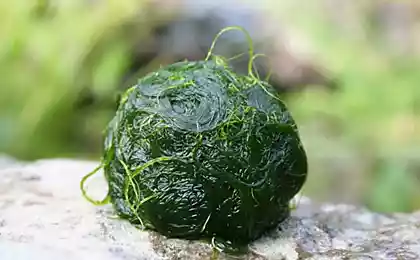562
The roof is made of reeds: eco-friendly practical exotic
In the distant past, covered with reeds, the roof was given a low level of prosperity of its owner. Today reed roof – a sign of prosperity and the evidence of the high status of the owner of the house. These roofs are very popular in Europe, not so long ago the fashion for them came to Russia. And this is no accident. Most of the materials for finishing the roof with all the tricks of the designers and architects create the roof of the standard sample. However, this solution satisfies not all. The desire to Express their individuality makes developers look for new or forgotten old materials and use them in modern construction. Reeds for the roof is one of those finds.
Unusual appearance is not the only advantage, which has a thatched roof. Material for the manufacture of special, so it is highly resistant to any weather conditions. Provided that in the process of installation strictly comply with all of the technology, such a roof will not be afraid of no wind, no precipitation or temperature jumps. Moreover, for any organics moisture is destructive. Sooner or later in a wet environment starts to develop fungus. Reeds grow in such an environment, it is natural for him, so he is insensitive to her. The stems of the plants do not absorb moisture, it just runs down their walls. Even during the most intense precipitation water penetrates the roof is not more than 3-5 cm that are not dangerous for the structure.
Thatched roof eco-friendly, because its production uses no processed reed stalk with about one year of age. Cut it in the autumn-winter period, when the plant root system is at rest. For arrangement of the roof is taken stems, the length of which is 1.5-2.0 meters or more. If this is the best material collected on the shores of the freshwater reservoirs. The reeds from the waters of coastal estuaries impregnated with salt, which affects its quality. The stems are stacked in sheaves and tie them with wire made of stainless steel. In this form, they laid on the roof.

The roof of reeds breathing that provides covered its building with natural ventilation. She has the ability to maintain inside the building a stable temperature, keeping you warm in winter and cool in the summer. Hydro and thermal insulation for thatched roof is not needed. This is due to the characteristics of the material having a tubular structure. The air that fills the stems, acts as the insulator. With the result that the thermal conductivity of the roof of reeds 4 times lower than wood and 7 times less than that of brick. In addition, numerous hollow tubes great delay sound, perfect shielding from unwanted noise.
It may seem that the roof of reeds can serve for a long time, but it's not. Its service life is 50-80 years, then begin to break down the upper layers of the material. Experts recommend to carry out regular repair work for restoration of the first three to five upper layers, which will help extend the life of the roof. Usually, this procedure is carried out once in 15 years, most of them not required. Signal that it is time the roof is replaced, will be heard the characteristic horizontal lines and bare of the garter. However, this happens only a few decades after installation.
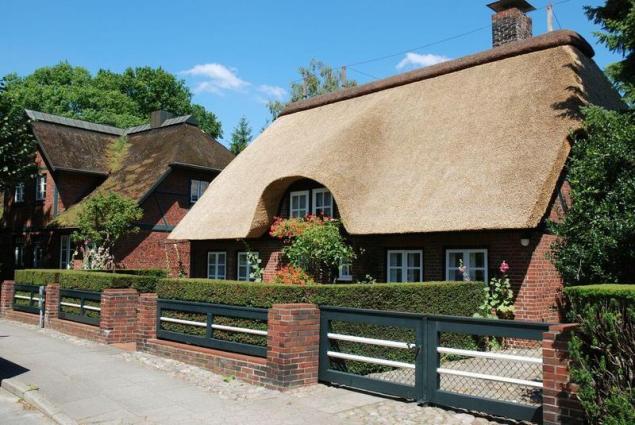
Many interested in the question of fire safety, the roof of reeds, as is known, the dry stalks burn very well. There is a special technique that significantly reduces the risk of fire and burning material. First of all, the roof design needs to be just closed. Laying on the rafters and open the crate prevents the flow of air to the stems of reeds that in the event of fire will only strengthen the fire. The closed technique involves laying the sheaves on the mounting sheets of plywood with a thickness of about 20 mm. Tightly bound in sheaves, the stalks of the cane very tightly laid on the ground, which deprives them of the possibility of self-sustained combustion in the absence of air flow.
Stacked in such a way, the cane will burn only under the condition that the source of fire is located directly on the roof. If you conduct additional flame retardant treatment, the roof will become completely invulnerable to flame. However, in the latter case, lost its eco-friendliness. Another feature of the roof from the stems of reeds is that it must necessarily be with a steep slope. The greater the angle, the longer a roof. Minimum slope of the slope is 45°.
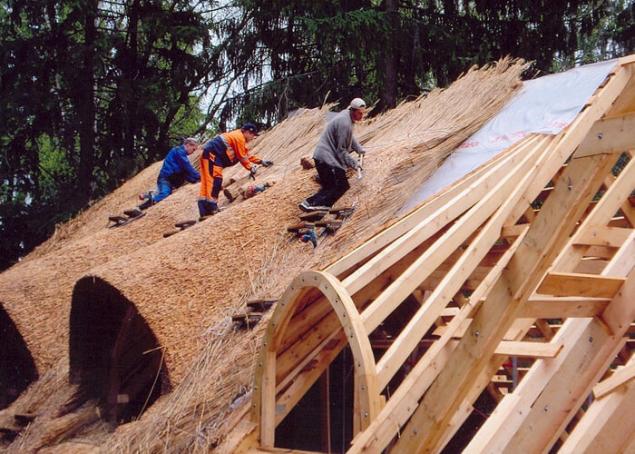
The technology of laying of reeds rather complicated and requires certain skills. The sheaves are arranged on the surface of the roof, and then they pull a wire and tie the fasteners screwed into the base. The fastening is very tight, so that the stalks on the plots fixing sticking out like bristles. The second and each subsequent series are stacked with a shift.
Technology outside should be visible, only the lower 2-3 cm of each stem. To obtain such a result, the reeds in a special way push off ramp. At the end of laying the stalks clean and cut off protruding stems. Special tool clapera reed egged and leveled. The finished roof should be smooth, without holes, steps and the visible lines.
The roof is made of reeds – a practical and beautiful solution. Plant stems are flexible, allowing you to create the most complex architectural forms. The color of the thatched roof is also extremely attractive. In the year of laying the roof will appreciate the bright Golden hue, which will make a more intense tone. Very natural and harmonious thatched roof looks paired with natural tile that is often used by designers that are developing a very attractive combination of projects. Not long ago, the roof of reeds was considered elite, but the demand for it is gradually increasing because not every treatment can boast of an absolute ecological compatibility and excellent performance. published
P. S. And remember, only by changing their consumption — together we change the world! ©
Source: www.stroitelstvo365.ru/vsyo-o-krovle/krisha-iz-kamisha
Unusual appearance is not the only advantage, which has a thatched roof. Material for the manufacture of special, so it is highly resistant to any weather conditions. Provided that in the process of installation strictly comply with all of the technology, such a roof will not be afraid of no wind, no precipitation or temperature jumps. Moreover, for any organics moisture is destructive. Sooner or later in a wet environment starts to develop fungus. Reeds grow in such an environment, it is natural for him, so he is insensitive to her. The stems of the plants do not absorb moisture, it just runs down their walls. Even during the most intense precipitation water penetrates the roof is not more than 3-5 cm that are not dangerous for the structure.
Thatched roof eco-friendly, because its production uses no processed reed stalk with about one year of age. Cut it in the autumn-winter period, when the plant root system is at rest. For arrangement of the roof is taken stems, the length of which is 1.5-2.0 meters or more. If this is the best material collected on the shores of the freshwater reservoirs. The reeds from the waters of coastal estuaries impregnated with salt, which affects its quality. The stems are stacked in sheaves and tie them with wire made of stainless steel. In this form, they laid on the roof.

The roof of reeds breathing that provides covered its building with natural ventilation. She has the ability to maintain inside the building a stable temperature, keeping you warm in winter and cool in the summer. Hydro and thermal insulation for thatched roof is not needed. This is due to the characteristics of the material having a tubular structure. The air that fills the stems, acts as the insulator. With the result that the thermal conductivity of the roof of reeds 4 times lower than wood and 7 times less than that of brick. In addition, numerous hollow tubes great delay sound, perfect shielding from unwanted noise.
It may seem that the roof of reeds can serve for a long time, but it's not. Its service life is 50-80 years, then begin to break down the upper layers of the material. Experts recommend to carry out regular repair work for restoration of the first three to five upper layers, which will help extend the life of the roof. Usually, this procedure is carried out once in 15 years, most of them not required. Signal that it is time the roof is replaced, will be heard the characteristic horizontal lines and bare of the garter. However, this happens only a few decades after installation.

Many interested in the question of fire safety, the roof of reeds, as is known, the dry stalks burn very well. There is a special technique that significantly reduces the risk of fire and burning material. First of all, the roof design needs to be just closed. Laying on the rafters and open the crate prevents the flow of air to the stems of reeds that in the event of fire will only strengthen the fire. The closed technique involves laying the sheaves on the mounting sheets of plywood with a thickness of about 20 mm. Tightly bound in sheaves, the stalks of the cane very tightly laid on the ground, which deprives them of the possibility of self-sustained combustion in the absence of air flow.
Stacked in such a way, the cane will burn only under the condition that the source of fire is located directly on the roof. If you conduct additional flame retardant treatment, the roof will become completely invulnerable to flame. However, in the latter case, lost its eco-friendliness. Another feature of the roof from the stems of reeds is that it must necessarily be with a steep slope. The greater the angle, the longer a roof. Minimum slope of the slope is 45°.

The technology of laying of reeds rather complicated and requires certain skills. The sheaves are arranged on the surface of the roof, and then they pull a wire and tie the fasteners screwed into the base. The fastening is very tight, so that the stalks on the plots fixing sticking out like bristles. The second and each subsequent series are stacked with a shift.
Technology outside should be visible, only the lower 2-3 cm of each stem. To obtain such a result, the reeds in a special way push off ramp. At the end of laying the stalks clean and cut off protruding stems. Special tool clapera reed egged and leveled. The finished roof should be smooth, without holes, steps and the visible lines.
The roof is made of reeds – a practical and beautiful solution. Plant stems are flexible, allowing you to create the most complex architectural forms. The color of the thatched roof is also extremely attractive. In the year of laying the roof will appreciate the bright Golden hue, which will make a more intense tone. Very natural and harmonious thatched roof looks paired with natural tile that is often used by designers that are developing a very attractive combination of projects. Not long ago, the roof of reeds was considered elite, but the demand for it is gradually increasing because not every treatment can boast of an absolute ecological compatibility and excellent performance. published
P. S. And remember, only by changing their consumption — together we change the world! ©
Source: www.stroitelstvo365.ru/vsyo-o-krovle/krisha-iz-kamisha


